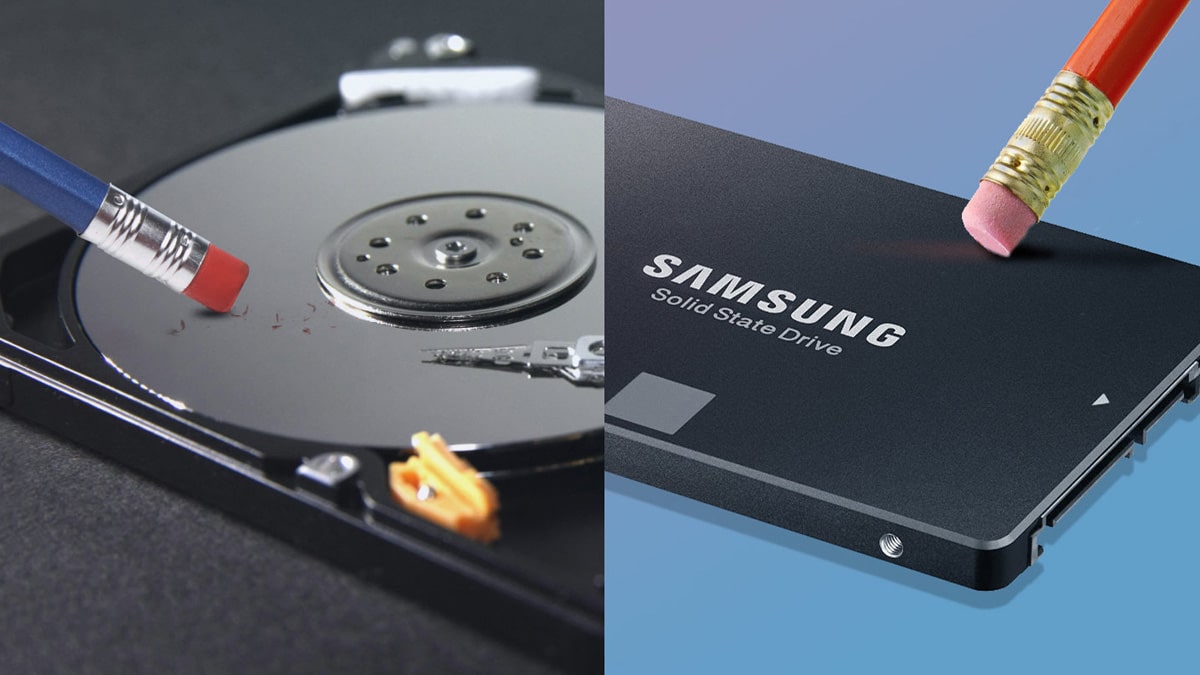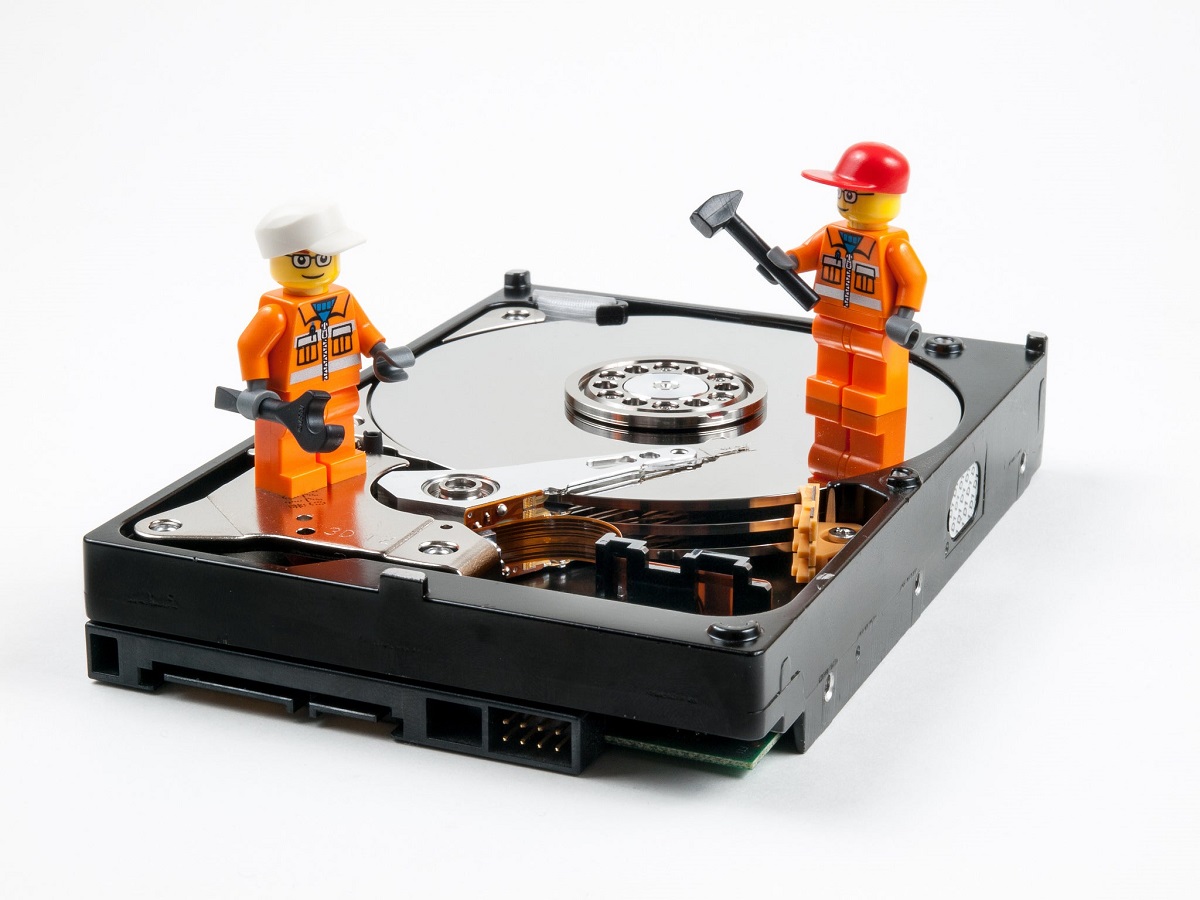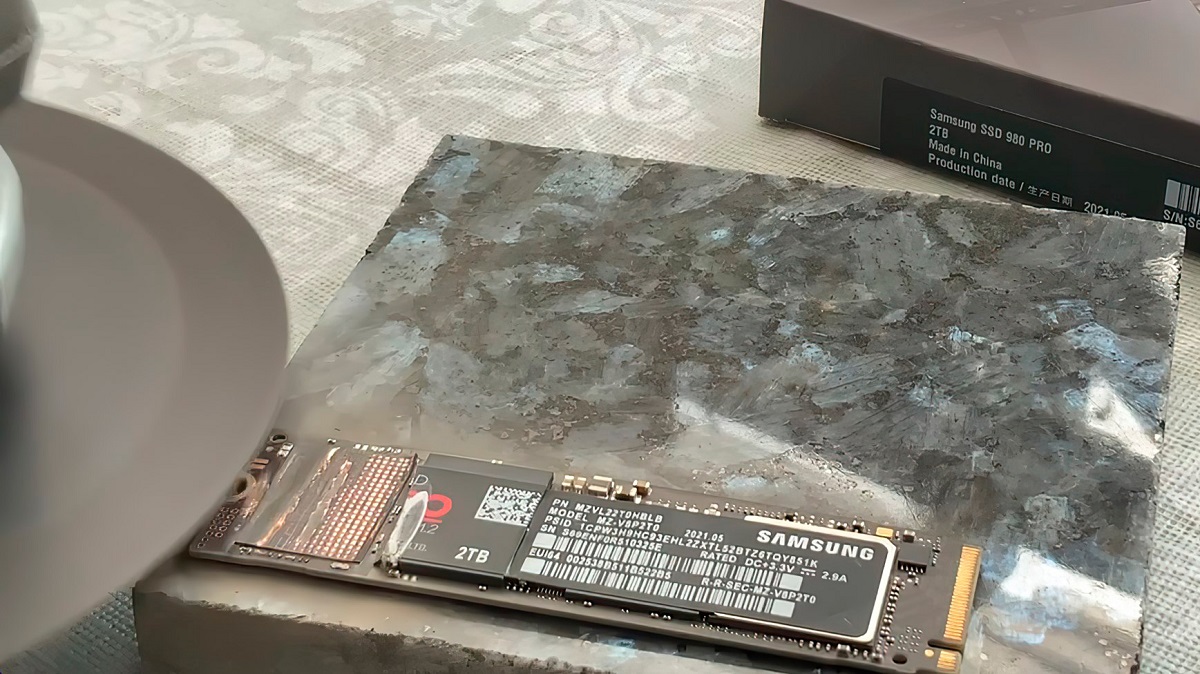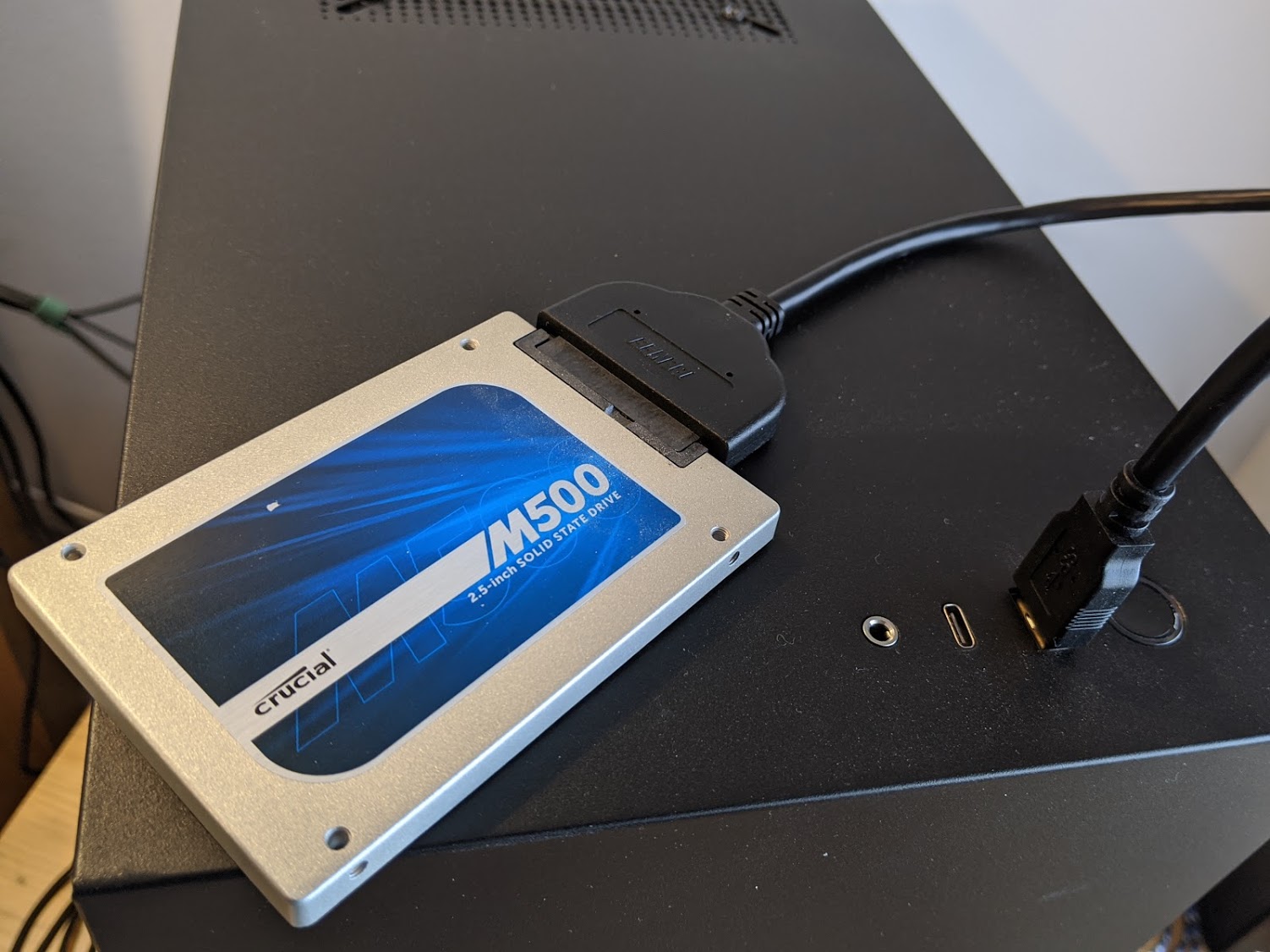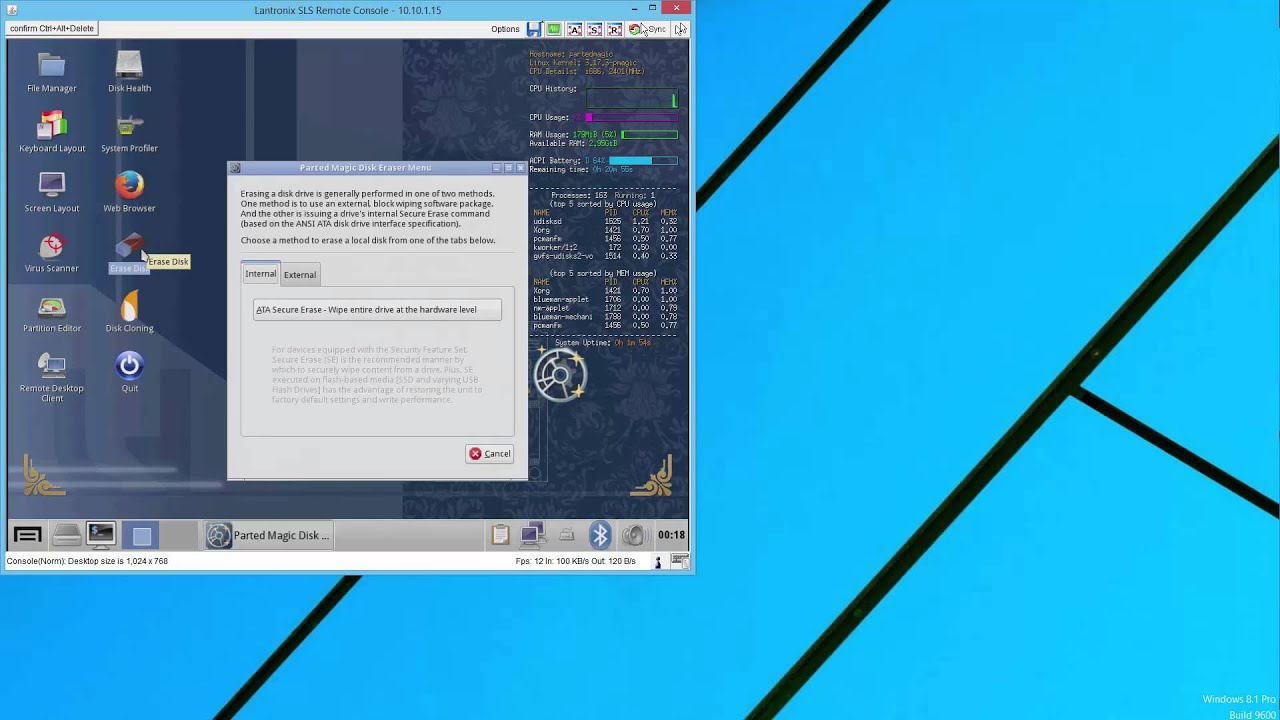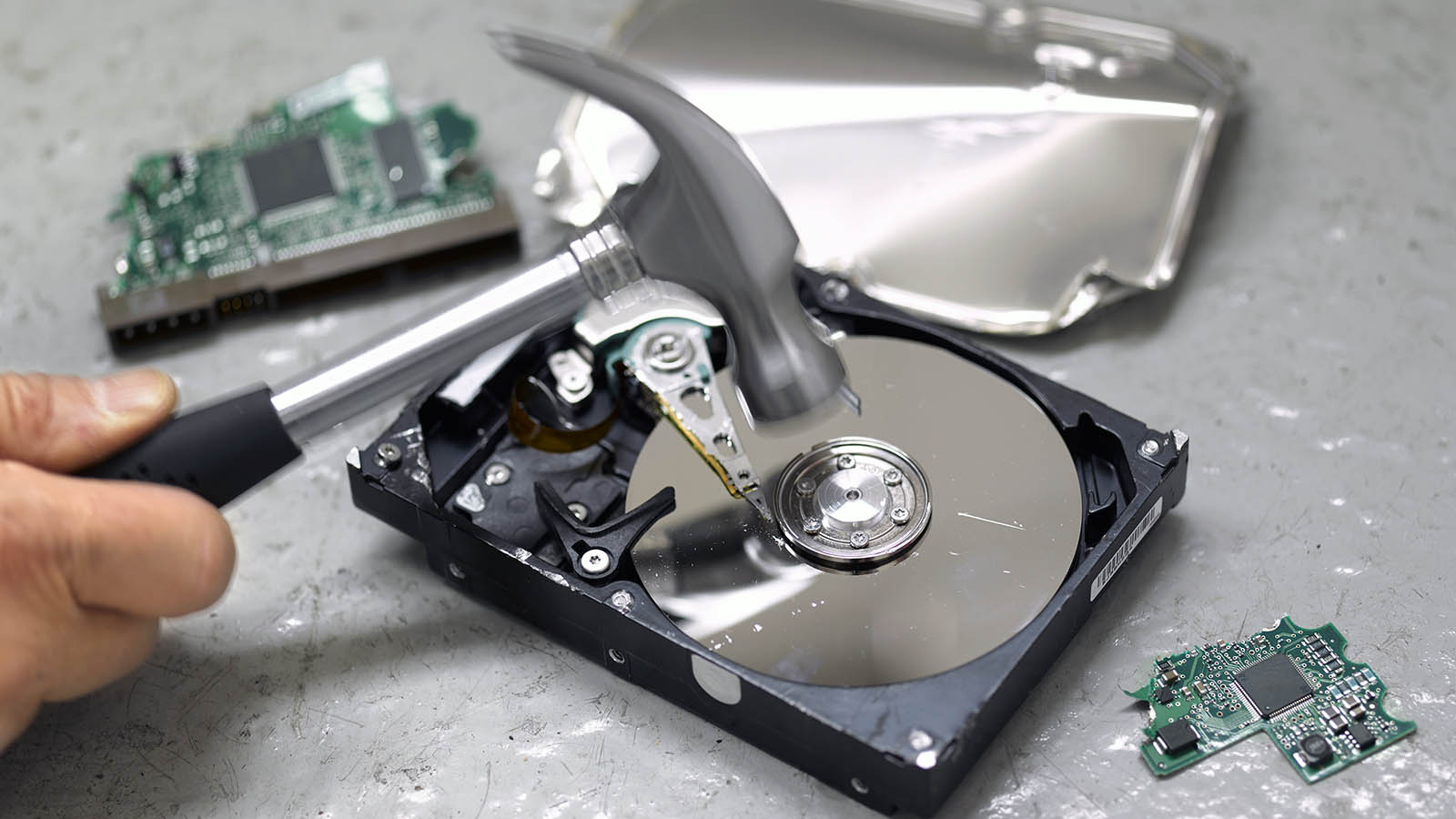Introduction
Welcome to the world of data destruction on Solid-State Drives (SSDs), where the task of permanently erasing data takes on a whole new level of complexity. SSDs have become increasingly popular due to their speed and reliability, replacing traditional hard drives in many devices such as laptops and smartphones. However, the unique architecture of SSDs poses a challenge when it comes to securely wiping sensitive information.
Unlike traditional hard drives that store data on magnetic platters, SSDs use NAND flash memory chips to store data electronically. This technology allows for faster access times and better performance but presents a new set of considerations when it comes to data destruction.
When it comes to disposing of an SSD or repurposing it, simply deleting files or formatting the drive is not enough to ensure that the data is permanently erased. Data remnants can still reside on the drive and could potentially be recovered using specialized software or techniques.
The importance of properly destroying data on an SSD cannot be overstated. Whether you are an individual protecting your personal information or a business safeguarding sensitive data, it is crucial to take the necessary steps to ensure data integrity and protect against unauthorized access or data breaches.
In this article, we will explore the various factors to consider when choosing a data destruction tool for SSDs. We will discuss the benefits and drawbacks of built-in secure erase features, third-party data destruction software, and physical destruction methods. By understanding these options, you will be equipped to make an informed decision on the best approach for destroying data on your SSD.
Understanding SSDs
Before delving into the intricacies of data destruction on SSDs, it is essential to have a basic understanding of how SSDs function. Unlike traditional hard drives, which use spinning magnetic disks to read and write data, SSDs utilize NAND flash memory technology.
NAND flash memory consists of a grid of cells that can hold electrical charges. Each cell represents a bit of data, with multiple cells grouped together to form a page of data. These pages are further combined to create blocks of data.
When data is written to an SSD, the controller sends an electrical charge to the appropriate cells, causing them to store either a 1 or a 0. The challenge arises when erasing data from an SSD. Unlike traditional hard drives, where data can be overwritten or magnetically erased, SSDs face limitations due to the characteristics of NAND flash memory.
SSDs must erase data at the block level, making it necessary to copy the contents of a block to a new location before erasing it. This process, known as garbage collection or wear leveling, helps to distribute write operations evenly across the drive to prolong its lifespan.
Furthermore, SSDs employ a technique called data compression, where redundant or repeated data is stored more efficiently. This results in the SSD appearing larger in capacity than it actually is, as the compression algorithms reduce the amount of physical space required.
Understanding these unique aspects of SSDs is crucial when it comes to selecting the most effective method of data destruction. It is necessary to choose a tool or technique that can securely erase data at the block level, taking into account the challenges posed by wear leveling and data compression.
Now that we have a basic understanding of SSDs and their functioning, let us proceed to explore the importance of properly destroying data on these drives for data security and privacy.
The Importance of Properly Destroying Data on an SSD
Properly destroying data on an SSD is of utmost importance to ensure data security and privacy. Failure to adequately erase sensitive information can leave individuals and businesses vulnerable to data breaches, identity theft, and other malicious activities.
One of the primary reasons why data destruction on SSDs is critical is the non-volatile nature of NAND flash memory. Unlike volatile memory, which loses its data when powered off, NAND flash memory retains information even when disconnected from power. This means that if an SSD is not properly wiped, any data it contains can be recovered and accessed by unauthorized individuals.
Furthermore, the increasing prevalence of SSDs in personal and professional settings means that more sensitive information is being stored on these drives. Personal data, financial records, confidential business documents, and intellectual property can all be potentially exposed if an SSD is not securely wiped before disposal or repurposing.
Not only does properly destroying data on an SSD protect against unauthorized access, but it also ensures compliance with data protection regulations. Many industries, such as healthcare and finance, are governed by stringent data security requirements, including the secure disposal of sensitive information. By effectively erasing data on an SSD, individuals and businesses can avoid fines, legal ramifications, and reputational damage that may arise from non-compliance.
Proper data destruction on SSDs also takes into consideration the environmental impact. Electronic waste, including improperly disposed SSDs, contributes to pollution and resource depletion. Recycling or securely erasing the data on an SSD ensures that it can be ethically and responsibly disposed of, minimizing the environmental footprint.
In summary, the importance of properly destroying data on an SSD cannot be overlooked. It safeguards against data breaches, protects sensitive information, ensures compliance with regulations, and minimizes the environmental impact. By understanding the significance of secure data destruction on SSDs, individuals and businesses can take the necessary steps to prioritize data security and privacy.
Factors to Consider When Choosing a Data Destruction Tool
Choosing the right data destruction tool for an SSD requires careful consideration of various factors. Each method of erasing data has its own advantages and drawbacks, and selecting the most appropriate tool depends on factors such as security requirements, convenience, and the level of confidence in the efficacy of the method.
One essential factor to consider is the level of security required for data destruction. Different tools offer different levels of security, ranging from basic methods that overwrite data with random characters to advanced techniques that employ multiple passes and encryption algorithms. Assessing the sensitivity of the data being stored on the SSD and the potential consequences of a data breach can help determine the appropriate level of security needed.
Another important consideration is convenience and ease of use. Some data destruction tools are built directly into the SSD’s firmware, allowing for quick and easy access to secure erase functions. These built-in features may offer a convenient and user-friendly way to erase data without the need for additional third-party software. However, it is crucial to ensure that the secure erase feature of the SSD is reliable and effective.
Third-party data destruction software is another option to consider. These software tools often provide more advanced features and customizable options for data erasure. They can offer various erasure algorithms, verification processes, and reporting capabilities. However, using third-party software may involve additional steps and potentially incur extra costs.
The speed of the data destruction process is also a factor to consider. Some methods, such as physical destruction, can be time-consuming and may not be ideal for large volumes of data. In contrast, software-based methods, particularly those utilizing advanced algorithms, can efficiently erase data on SSDs in a relatively short amount of time.
Lastly, data recovery assurance is an important factor when choosing a data destruction tool. The tool should provide confidence that the data cannot be recovered using any means available. Some software tools offer certification or compliance with industry standards, providing reassurance that the erased data cannot be retrieved even by specialized techniques or hardware.
By considering factors such as the level of security required, convenience, speed, and data recovery assurance, individuals and businesses can choose the most suitable data destruction tool for their needs. It is crucial to weigh these factors carefully and strike a balance between data security requirements and practical considerations.
Built-In Secure Erase
Many SSDs come equipped with a built-in secure erase feature, which offers a convenient and direct method of erasing data on the drive. This feature is embedded within the SSD’s firmware, making it easily accessible without the need for additional software or tools.
The secure erase function initiated from the SSD’s firmware ensures that all data stored on the drive is effectively and securely erased. It utilizes the NAND flash memory’s unique characteristics to overwrite the entire drive with random data, making the original data virtually irretrievable.
One of the primary advantages of using the built-in secure erase feature is its simplicity and convenience. The process can be initiated through the drive’s firmware or a utility provided by the SSD manufacturer. This eliminates the need to acquire and install third-party software, making it a user-friendly option for individuals and businesses.
Another benefit of using the built-in secure erase feature is its efficiency. The process is usually quick, especially for modern SSDs with advanced firmware. Unlike alternative methods that may require multiple passes or time-consuming physical destruction, the built-in secure erase can wipe the drive effectively in a relatively short amount of time.
Furthermore, utilizing the built-in secure erase feature can give users confidence in the efficacy of the erasure process. Since the feature is embedded within the SSD’s firmware, it is specifically designed for that specific drive model. This ensures compatibility and reliability, reducing the risk of incomplete or ineffective data erasure.
However, it is crucial to note that not all SSDs have the same level of secure erase functionality. Some older or lower-end drives may have limited or less robust built-in secure erase features. In such cases, it is advisable to consult the manufacturer’s documentation or seek expert advice to ensure that the chosen SSD supports a secure erase feature that meets the desired security requirements.
In summary, the built-in secure erase feature offers a convenient, efficient, and reliable method of erasing data on an SSD. It eliminates the need for third-party software, ensures compatibility with the drive, and provides peace of mind that the data cannot be easily recovered. However, it is essential to verify the capabilities of the specific SSD and understand any limitations of the built-in secure erase feature before relying solely on this method for data destruction.
Third-Party Data Destruction Software
When it comes to erasing data on an SSD, third-party data destruction software provides another viable option. This software offers advanced features and customizable options that go beyond the capabilities of built-in secure erase functions. It can be a valuable tool for individuals and businesses seeking a more comprehensive and tailored approach to data destruction.
One of the primary advantages of using third-party data destruction software is the flexibility it offers. These software tools typically provide a range of erasure algorithms, allowing users to choose the method that best suits their security requirements. Common algorithms include random data overwriting, DoD 5220.22-M standard, and Gutmann method.
Additionally, third-party software often includes verification processes to ensure the effectiveness of the data erasure. These verification mechanisms can involve cross-checking the overwritten data with the originals, hashing algorithms to verify the integrity of the overwritten data, or scanning the drive for any remaining traces of information.
Another benefit of using third-party software is the reporting capability it provides. Most data destruction software generates comprehensive reports detailing the erasure process, including information such as timestamps, erasure method used, and a summary of the erased data. These reports can be crucial for compliance purposes, providing evidence of proper data destruction in regulated industries.
Furthermore, third-party software is often compatible with a wide range of SSD models and brands, offering a more universal solution compared to the specific built-in secure erase functions. This compatibility ensures that users have access to the tools and features they need, regardless of the specific SSD they are using.
However, it is important to note that third-party data destruction software may involve additional costs, especially for premium or enterprise-level solutions. Users should evaluate their budget and the importance of the additional features provided by the software to determine if the investment is justifiable for their particular needs.
Lastly, it is crucial to select reputable and trusted third-party software vendors to ensure the effectiveness and reliability of the erasure process. Reading reviews, checking for certifications or industry recognition, and consulting with experts or IT professionals can help in making an informed decision regarding the choice of data destruction software.
Overall, third-party data destruction software offers flexibility, customization, verification, and reporting capabilities beyond what is available in built-in secure erase functions. It provides users with a tailored solution for their data destruction needs and enhances confidence in the effectiveness of the erasure process.
Physical Destruction Methods
For those who require complete and irreversible data destruction, physical destruction methods offer a foolproof solution. These methods involve physically damaging or destroying the SSD to render the data unrecoverable. While they may be more time-consuming and irreversible, they provide the highest level of assurance when it comes to data destruction.
One of the most common physical destruction methods for SSDs is shredding. In this method, the SSD is placed in a specialized shredding machine that disintegrates the device into small pieces. The shredded components are then recycled or disposed of appropriately. Shredding completely destroys the NAND flash memory chips and other components of the SSD, rendering all data unrecoverable.
Another physical destruction method is drilling. In this method, a drill is used to puncture the SSD multiple times, damaging the internal components. By drilling through the NAND flash memory chips and other critical parts, the data stored on the SSD becomes inaccessible and unreadable.
Thermal destruction is also a viable option for physical data destruction. This method involves subjecting the SSD to extreme heat, such as from a high-powered incinerator or industrial furnace. The intense heat melts and destroys the NAND flash memory chips and other components, ensuring that the data cannot be recovered.
It is important to note that physical destruction methods offer irreversible data destruction but come with certain drawbacks. One major drawback is the irrecoverability of any useful components or materials from the SSD, making recycling or repurposing impossible. Additionally, physical destruction methods may not be suitable for all types of SSDs and may require specialized equipment or services.
Despite these drawbacks, physical destruction methods are often preferred in situations where the highest level of data security and confidentiality is required. Industries dealing with highly classified information, such as intelligence agencies or corporate entities handling confidential trade secrets, may opt for physical destruction methods to eliminate any possibility of data recovery.
Before implementing any physical destruction method, it is advisable to consult with professionals or adhere to specific guidelines provided by regulatory agencies. This ensures compliance with environmental regulations and proper disposal of the destroyed SSD components.
In summary, physical destruction methods such as shredding, drilling, and thermal destruction offer a reliable and irreversible solution for data destruction on SSDs. While they may have drawbacks such as irrecoverability and specialized equipment requirements, they provide the highest level of assurance when it comes to rendering data inaccessible and unreadable.
The Pros and Cons of Each Method
When it comes to data destruction on SSDs, each method—whether it be built-in secure erase, third-party software, or physical destruction—has its own set of pros and cons. Understanding these advantages and drawbacks is crucial in selecting the most appropriate method for your specific needs and requirements.
Starting with built-in secure erase, the main advantage is its convenience. It is readily accessible through the SSD’s firmware or a manufacturer-provided utility, making it user-friendly and straightforward. The process is typically quick and efficient, erasing data effectively within a relatively short timeframe. However, the reliability and effectiveness of built-in secure erase features may vary among SSD models, and older or lower-end drives may have limited or less robust options.
Third-party data destruction software offers flexibility and advanced features. With customizable erasure algorithms and verification processes, users can tailor the method to meet their security requirements. Reporting capabilities provide documentation for compliance purposes. However, third-party software may involve additional costs, especially for premium or enterprise-level solutions, and selecting trusted and reputable vendors is crucial to ensure effectiveness.
Physical destruction methods, such as shredding, drilling, or thermal destruction, offer a foolproof solution for complete data destruction. They provide the highest level of assurance as the data becomes irrecoverable. These methods are particularly preferred for handling highly classified information. However, physical destruction methods have their drawbacks. They may not be suitable for all SSD types and often render recycling or repurposing of any useful components impossible. Additionally, specialized equipment or services may be required.
In summary, the choice of data destruction method depends on various factors, including convenience, security requirements, costs, and environmental considerations. Built-in secure erase offers convenience and efficiency but may have limitations in reliability. Third-party software provides flexibility and advanced features but may incur additional costs. Physical destruction methods ensure irrecoverable data destruction but may not be suited for all SSDs and hinder recycling efforts.
Considering these pros and cons, it is important to weigh the specific needs and priorities when selecting the most suitable data destruction method for your SSD. Evaluating factors such as data sensitivity, security requirements, compliance regulations, and environmental considerations will aid in making an informed decision for effective and responsible data destruction.
Conclusion
Properly destroying data on an SSD is essential for protecting sensitive information, ensuring data security and privacy, complying with regulations, and minimizing environmental impact. Choosing the right method of data destruction depends on various factors, including security requirements, convenience, efficacy, and environmental considerations.
Understanding the unique characteristics of SSDs, such as their use of NAND flash memory, is crucial in selecting the most appropriate data destruction method. Options include built-in secure erase, third-party data destruction software, and physical destruction methods.
Built-in secure erase offers convenience and efficiency, but its reliability and effectiveness may vary among SSD models. Third-party software provides flexibility and advanced features, customization options, and reporting capabilities, though it may involve additional costs. Physical destruction methods ensure irrecoverable data destruction, but they may hinder recycling efforts and require specialized equipment or services.
Each method has its own set of pros and cons, and the choice should be made based on the specific needs and priorities of individuals and businesses. It is vital to evaluate factors such as data sensitivity, security requirements, compliance regulations, and environmental impact to make an informed decision.
By understanding the importance of properly destroying data on an SSD and considering the various factors when choosing a method, individuals and businesses can prioritize data security, protect sensitive information, comply with regulations, and minimize their environmental footprint.
Ultimately, the goal is to ensure that data on SSDs is effectively and irreversibly destroyed, leaving no room for unauthorized access, data breaches, or potential harm. Whether it be through the built-in secure erase feature, third-party software, or physical destruction, taking the necessary steps to destroy data on SSDs should be a priority for safeguarding information and maintaining data integrity.







